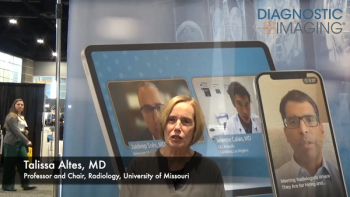
Sonologists, ER physicians set joint guidelines for abdominal trauma ultrasound
The American Institute of Ultrasound in Medicine and the American College of Emergency Physicians have announced the publication of a joint protocol for blunt abdominal injuries.
The American Institute of Ultrasound in Medicine and the American College of Emergency Physicians have announced the publication of a joint protocol for blunt abdominal injuries.
Patients with abdominal trauma undergo the focused assessment with sonography in trauma (FAST) exam for the detection of large fluid collections or other type of internal damage that requires immediate treatment. The technique was introduced about three decades ago but became prominent in the early 1990s. Before that, surgery and other invasive procedures were the standard of care.
The use of the emergency FAST examination has grown steadily inside and outside hospital settings. These include prehospital situations, disaster areas, and military locations. The AIUM and the ACEP approved the joint guideline to promote high-quality ultrasound examinations befitting this context and to aid emergency medical practitioners who perform FAST, according to spokespeople for both organizations.
"The FAST guideline reinforces ACEP's ultrasound imaging criteria and gains further national and international prominence by its formal acceptance by AIUM, a national multispecialty organization," said Dr. Vivek Tayal, chair of the ACEP Section of Emergency Ultrasound.
The
According to AIUM officials, more than 95% of emergency medicine residents now learn to perform FAST, which is widely regarded as the standard of care for the initial assessment in trauma centers outside the U.S. The test is also included in Advanced Trauma Life Support, a training program for physicians who manage acute trauma cases.
"Because ultrasound is utilized by so many medical specialty groups, the future use of this technology lies in working collaborately with other societies to develop uniform guidelines for performing ultrasound examinations," said AIUM president Dr. Joshua Copel.
For more information from the Diagnostic Imaging archives:
Newsletter
Stay at the forefront of radiology with the Diagnostic Imaging newsletter, delivering the latest news, clinical insights, and imaging advancements for today’s radiologists.




























